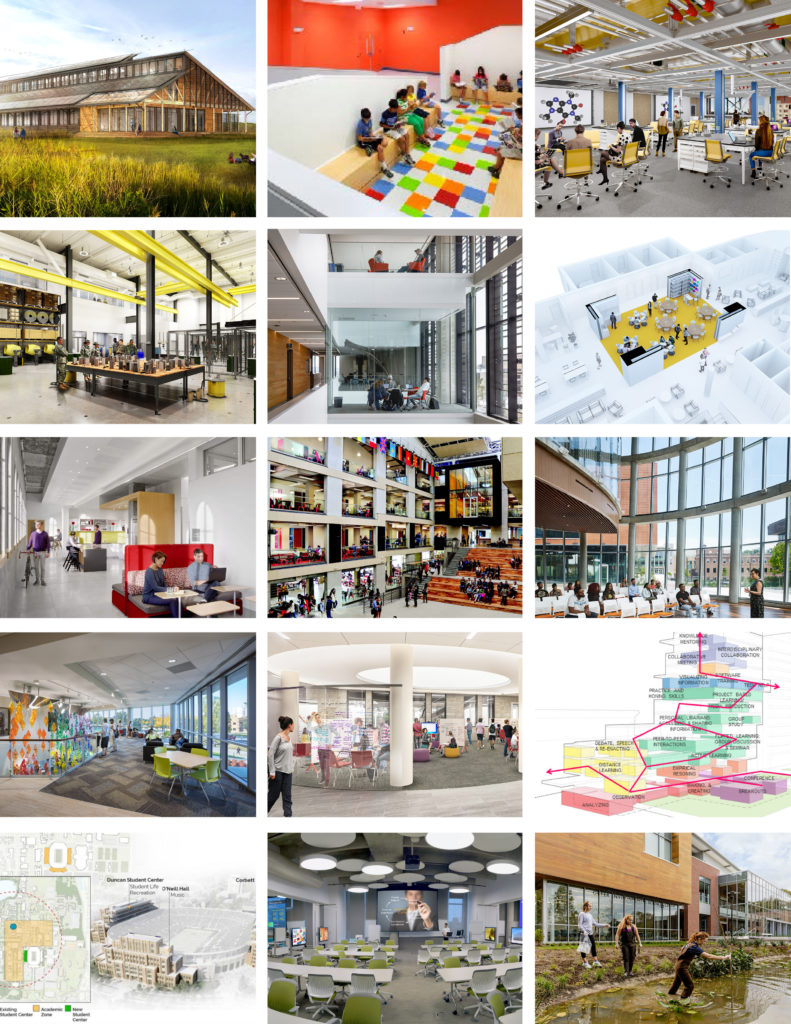How do you make the case that the investment in institutional investment in the physical environment for learning makes a difference? How will you know? What evidence makes that case? From the LSC spaces that work collection II, some potential measures of success can be distilled. These stories about recent projects embrace but go beyond attention to impact of learners while students and alumni; they set forth project goals that are measurable, returns that will be benefit the institution in the future—in regard to increased enrollments and graduate rates, of collaborative research between campus and community and more. Some examples of institutional goals that can be embedded in the planning process and measured post-occupancy:
- to be a magnet for thought leadership in our region centered on the environmental challenges facing the region, the country, and the world
- to inspire, empower, and increase minority success in fields of STEM learning
- has classrooms as adaptable as a Swiss Army knife
- physically and programmatically bridges disciplines, offers a welcoming portal to students, and invites the study of local ecology
- becomes a learning ecosystem – an integrated learning center that brings together several distinct components, including: open-ended project labs, student commons and the Hub.
From the 2019 LSC Colloquium:

